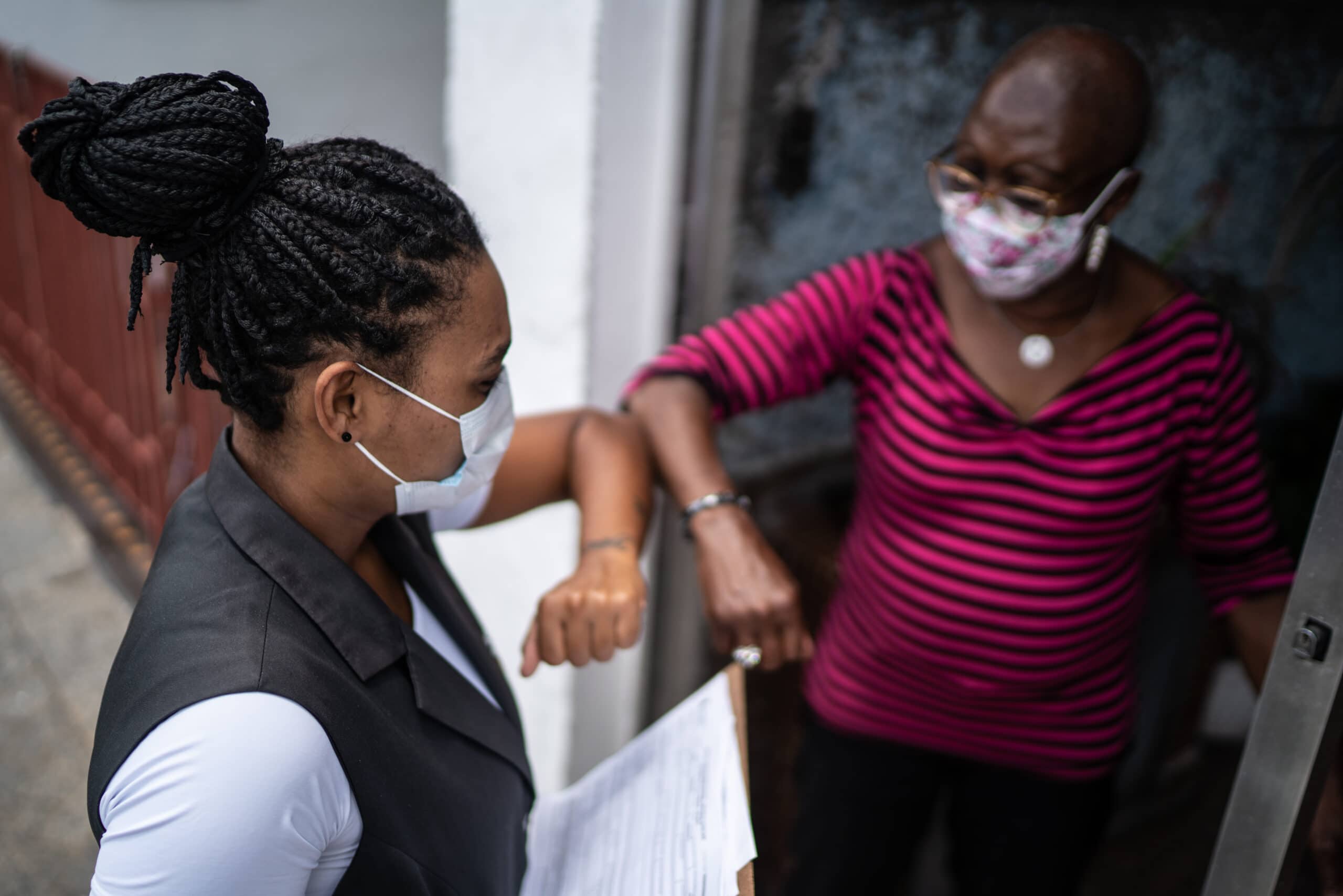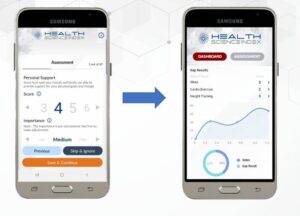UAMS’ Heart Healthy Communities Program Initiates Health App in Phillips County
| LITTLE ROCK — Community health workers have been going door-to-door in Phillips County to show residents how a new app can help them improve their health.
On behalf of the UAMS Heart Healthy Communities project based at the University of Arkansas for Medical Sciences (UAMS), the five workers work to identify needs in medically underserved areas and connect people with community resources, including social and media services, with a goal of improving health and wellness.
The idea behind the Health Science Index (HSI) app developed by Seattle-based One Item Inc. is to make personalized wellness information easily accessible through participants’ smart phones, to guide them in managing health concerns, such as losing weight and getting enough sleep.
Meanwhile, the information gathered through each participant’s input will help researchers at UAMS create a registry of people in the community who are at risk of premature death. In line with UAMS’ goal of improving the health and well-being of all Arkansans, the registry will be used to determine which health care services are most needed in the medically underserved area to reduce the incidence of preventable conditions that can lead to premature death.
“We call it a living survey,” said Irion “Chip” Pursell, MPH, RN, who is the director of Cardiology Research in the UAMS Department of Internal Medicine’s Division of Cardiology.
The Heart Healthy Communities (HHC) project was previously known as The Lincoln Project.
Manifested in several forms — such as high blood pressure, congestive heart failure and stroke — heart disease is the leading cause of death in America and affects about 1 million people in Arkansas, or about one-third of the state’s population.
The HHC project, currently focused on Phillips County with plans to cover the neighboring counties of Chicot and Desha, began two years ago. Its goal is to study rural communities with high incidences of heart disease, to identify contributing social factors and to provide preventative and therapeutic opportunities to residents. The program is funded by a $70,000 grant, since renewed for a second year, from the U.S. Office of the Assistant Secretary of Health and Human Services.
Since late September, HHC researchers have been using the HSI app, modified for the project’s purposes, to further their mission. Erik Knutson, the president and CEO of One Item, said the HHC project is the first use of the app, which took five years to develop. Paula Braun at the U.S. Centers for Disease Control and Prevention in Atlanta introduced Knutson to Pursell and the program.
“The reality of health care in rural areas of Arkansas — and throughout the United States — is that they are in desperate need,” said Knutson. “Much of the challenge is due to the fact that only 9% of America’s physicians reside and work in rural communities, yet 26% of all Americans live in rural communities, and over 40% of Americans live farther than a 60-minute drive to a health care center.”
That combination can make prevention, diagnosis and management of premature death — particularly from heart disease — more difficult for people in rural communities. That is why the app’s ability to assess, track and guide participants toward wellness is an important part of the HHC mission to identify and engage high-risk individuals.
Knutson, a former senior program manager at Microsoft, said for now the app only tracks and provides feedback on health and wellness concerns, but eventually, it will enable two-way communication between rural patients and providers.
Participants receive daily reminders through their smart phones to focus on their most important health needs, based on information they supplied in an initial survey. The app then keeps them focused on just one to three wellness concerns — such as sleep, eating or stress — at a time. It provides links to resources related to each concern, records their progress and continually calculates, based on their responses to daily questions, how much closer they are to reaching each goal. When substantial progress is made in one “focus area,” the app moves on the next most pressing health concern.
“The feedback has been really strong,” Pursell said. “We’re trying to make the community the foundation of health and wellness. The highest compliment we get is that it is being used.”
Use of the HSI app is just one example of how HHC is collaborating with innovative partners.
Since May, it has also been working with Jess Barnes, Ph.D., co-founder and CEO of 20Lighter, a provider-managed cardio-metabolic weight loss program that Pursell calls “one of our most valued collaborators.”
Barnes said that during a two-month program that can be repeated, participants focus on reducing visceral fat — the fat around the organs in the chest and abdomen.
“It causes a lot of disease,” she said. “By reducing visceral fat, we allow risk to come down, and we become healthier.”
Pursell said the partnership with 20Lighter has provided some shocking results.
“We knew obesity was an issue” in the targeted communities, Pursell said, “but we didn’t realize the number of people with a BMI [body mass index] of 30 or 40.”
A BMI of under 25 is considered healthy.
Pursell said that about 20% of HHC’s roughly 100 participants are enrolled in the 20Lighter program
“We are a spoke in the HHC project wheel,” Barnes said. “We’re really honored to be a part of this initiative.”
She said 20Lighter works with Delta Circles Inc., a nonprofit organization based in Helena-West Helena that provides networking and support for African American women in the Delta and challenges them to think positively about themselves, their health and their finances.
Also working with the HHC program are the UAMS Center for Health Literacy and the UAMS Division of Medical Geography in the Fay W. Boozman College of Public Health.
UAMS is the state’s only health sciences university, with colleges of Medicine, Nursing, Pharmacy, Health Professions and Public Health; a graduate school; a hospital; a main campus in Little Rock; a Northwest Arkansas regional campus in Fayetteville; a statewide network of regional campuses; and eight institutes: the Winthrop P. Rockefeller Cancer Institute, Jackson T. Stephens Spine & Neurosciences Institute, Harvey & Bernice Jones Eye Institute, Psychiatric Research Institute, Donald W. Reynolds Institute on Aging, Translational Research Institute, Institute for Digital Health & Innovation and the Institute for Community Health Innovation. UAMS includes UAMS Health, a statewide health system that encompasses all of UAMS’ clinical enterprise. UAMS is the only adult Level 1 trauma center in the state. UAMS has 3,275 students, 890 medical residents and fellows, and five dental residents. It is the state’s largest public employer with more than 12,000 employees, including 1,200 physicians who provide care to patients at UAMS, its regional campuses, Arkansas Children’s, the VA Medical Center and Baptist Health. Visit www.uams.edu or uamshealth.com. Find us on Facebook, X (formerly Twitter), YouTube or Instagram.
###

